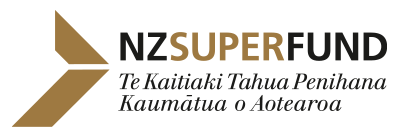Beliefs
Our investment beliefs complement and underpin our endowments and act as a key driver of our investment decisions.
These beliefs provide a clear statement about how we believe investment markets work. We've outlined them below.
| Decisions | Beliefs | Facts |
|---|---|---|
|
Governance and investment objectives |
Clear governance and decision-making structures that promote efficiency and accountability are effective and add value to the Fund. |
It is important to be clear about investment objectives for the Fund, risk tolerance, and the timeframe over which results are measured. |
|
Asset allocation |
Asset allocation is the key investment decision. Investors with a long-term horizon can outperform more short-term focused investors over the long-run. |
Risk and return are strongly related. There are varied investment risks that carry premiums / compensations. Illiquidity risk is one such premium. Investment diversification improves the risk to return (Sharpe) ratio of the Fund. |
|
Asset class strategy and portfolio structure |
Asset class expected returns are partly predictable; prices tend to revert to fair value over time. |
Investment markets are competitive and dynamic, with active returns very difficult to find and constantly changing source. Market volatility tends to cluster over short horizons but mean-reverts over longer horizons. Investment risks can be unbundled to make the Fund more efficient. This includes the separation of market (beta) and investment-specific investment manager skills (alpha). |
|
Manager and investment selection |
The ability to consistently generate excess returns from skill vs an appropriate benchmark (net of fees) is rare; where this ability exists, it is hard to access. Some markets or strategies have characteristics that are conducive to a manager's ability to generate active return. These characteristics may change over time. Environmental, social and governance considerations, including climate change, are fundamental to long-term risk and return. |
The more efficient a market is, the more difficult it is for a manager to generate active return. Research signals and methods used by managers tend to commoditise over time through market forces. In some cases synthetic exposure to a market or factor can provide a guaranteed active return to the Fund, and this represents an additional hurdle that an active manager must surpass. |
|
Execution |
|
Managing fees and costs and ensuring efficient implementation can prevent unnecessary cost. |
